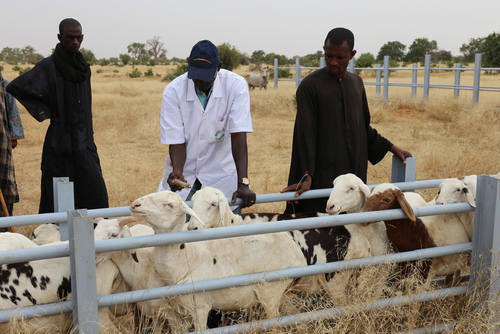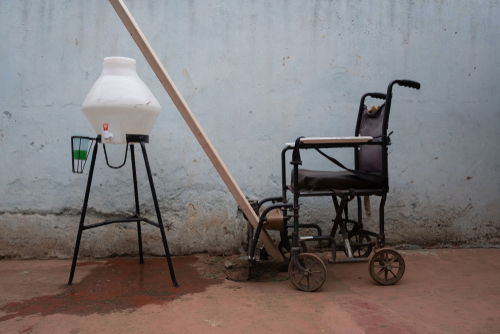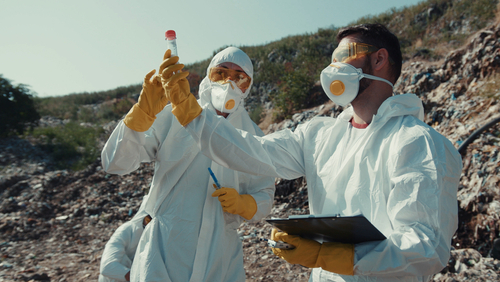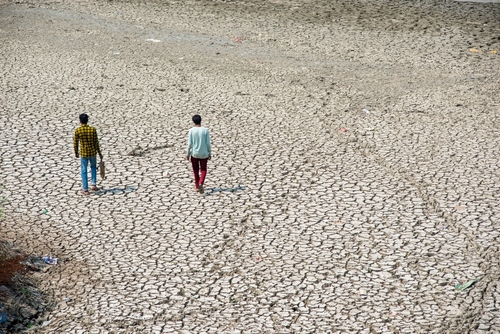January 17, 2024

The cost-effectiveness of a Shigella vaccine in low- and middle-income countries
Several vaccines against the Shigella bacterium – a leading cause of diarrheal diseases in children in low- and middle-income countries (LMICs) – are currently in the last stages of clinical development. An assessment of their public health value using the World Health Organization’s Full Value of Vaccine Assessment analytic framework estimates that an effective Shigella vaccine could avert nearly 600,000 deaths and save US$4.4 billion between 2025 and 2044. The vaccine’s average cost per disability-adjusted life-year averted was estimated at US$849 across countries, with greater cost-effectiveness in the African Region (US$ 161) and low-income countries (US$ 143). [WHO]
Mothers’ education is associated with childhood vaccination rates in urban Pakistan.
A cross-sectional survey assessed childhood vaccination rates (uptake of the third dose of the pentavalent vaccine, Penta-3) among children under one year old living in informal settlements in Karachi, Pakistan. According to the survey, less than one-third of the children had completed their scheduled immunization. Vaccine uptake was significantly associated with ethnicity, the children’s mother’s education status, the father’s occupation, and proximity to a vaccination center. Compared to children with mothers with no formal education, the odds of Penta-3 immunization were significantly higher for children with mothers who had obtained primary (aOR: 1.99; 95% CI: 1.40-2.84) and secondary or higher (aOR: 2.95; 2.34-3.71) education. [Vaccine: X]
Antimicrobial prescriptions were higher among hospitalized COVID-19 patients in Dubai.
An analysis of electronic health record (EHR) data from patients with confirmed COVID-19 infection in a hospital network in Dubai, United Arab Emirates, between 2017 and 2022 assessed the impact of COVID-19 on antimicrobial use. Antimicrobials were prescribed at an average rate of 1.91 and 1.30 prescriptions per encounter for inpatients and outpatients, respectively. The study found a strong association between COVID-19 diagnosis and antimicrobial prescription. Azithromycin, chloroquine, and hydroxychloroquine prescriptions among COVID-19 patients were 3.5 times higher than among non-COVID-19 patients. [PLOS Digital Health]
Successes and challenges in implementing Vietnam’s National Action Plan on AMR
A qualitative exploratory study assessing perceptions of Vietnam’s national action plan (NAP) on antimicrobial resistance (AMR) among 12 key informants in the human, animal, and environmental health sectors suggests that AMR is not sufficiently prioritized by the government or the general public. Although knowledge of AMR among health professionals across the three One Health sectors has increased since the publication of the NAP on AMR, cross-sectoral coordination has been challenged by the lack of governance and investment. Successful implementation of Vietnam’s NAP 2.0 must aim to achieve community-level ownership of AMS efforts, cross-sectoral collaboration, and increased public awareness of AMR. [JAC – Antimicrobial Resistance]
Spatial and temporal trends in tuberculosis distribution in Uganda
A retrospective spatial and temporal analysis of tuberculosis (TB) case notifications in Uganda between 2013 and 2022 reported 568,957 cases of TB, a 6 percent increase between 2013 and 2022. Case notification rates (CNRs) varied widely between regions; the Moroto, Napak, and Kampala districts had consistently high CNRs, while the Mbale and Soroti regions in eastern Uganda had the lowest CNRs. Geographic variability in CNR was suggested to be due to factors such as living conditions, drought, literacy rates, and access to high-quality healthcare. [BMC Infectious Diseases]
Elevated HIV drug resistance in HIV patients in Iran, independent of treatment history
A systematic review and meta-analysis on the prevalence of HIV drug resistance (HIVDR) among people living with HIV (PLHIV) in Iran shows that the pooled prevalence of acquired HIVDR among PLHIV was present in both those receiving antiretroviral therapy (ART) and those who did not (ART-naïve individuals). Among those receiving treatment, HIVDR ranged between 9 percent (3-18%) for protease inhibitors (PIs) and 34 percent (95% CI: 19-50%) for nucleotide reverse transcriptase inhibitors (NRTIs). Among ART-naïve individuals, the pooled prevalence of transmitted drug resistance ranged between 3.0 percent (95% CI: 1-6%) for NRTIs and 5.0 percent (2-9%) for non-nucleoside reverse transcriptase inhibitors. The findings highlight the need to monitor disease progression and conduct pretreatment drug-resistance testing. [BMC Infectious Diseases]
Wastewater monitoring can supplement clinical surveillance for respiratory viruses.
A recent study from Belgium highlights the utility of wastewater surveillance in understanding the epidemiology and transmission of viruses in the community. Community-derived data can complement surveillance in the clinic and aid in the early detection of disease outbreaks, considering that not all affected seek medical care. In the study, which spanned two years, respiratory viruses detected in wastewater were compared with those detected in patient samples from the clinic. The study showed a good correlation between the clinical reporting and wastewater detection of seasonal respiratory viruses, such as influenza, respiratory syncytial virus, and enterovirus. [Emerging Infectious Diseases]
Equitable financing of climate adaptation efforts in low-income countries
Climate change, deemed the foremost threat to child health by the World Health Organization, exacerbates global inequalities, disproportionately impacting low-income countries. Despite this, higher-income countries, also major contributors to climate change, lack comprehensive analyses of their impact on child health in lower-income counterparts. A recent case study in the UK and Malawi highlighted the repercussions of higher-income countries on child health in lower-income regions. Due to climate change, children in Malawi face heightened food insecurity and limited access to water, sanitation, and education. Additionally, they are more exposed to climate-related risks and mortality from diseases like malaria. According to the study, the United Kingdom should increase its financial commitment towards climate change adaptations in Malawi by 58 percent to meet net-zero targets. [PLOS Global Public Health]
Image from Shutterstock











